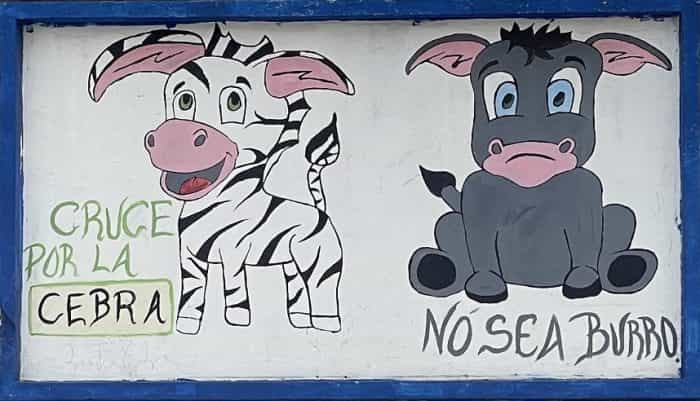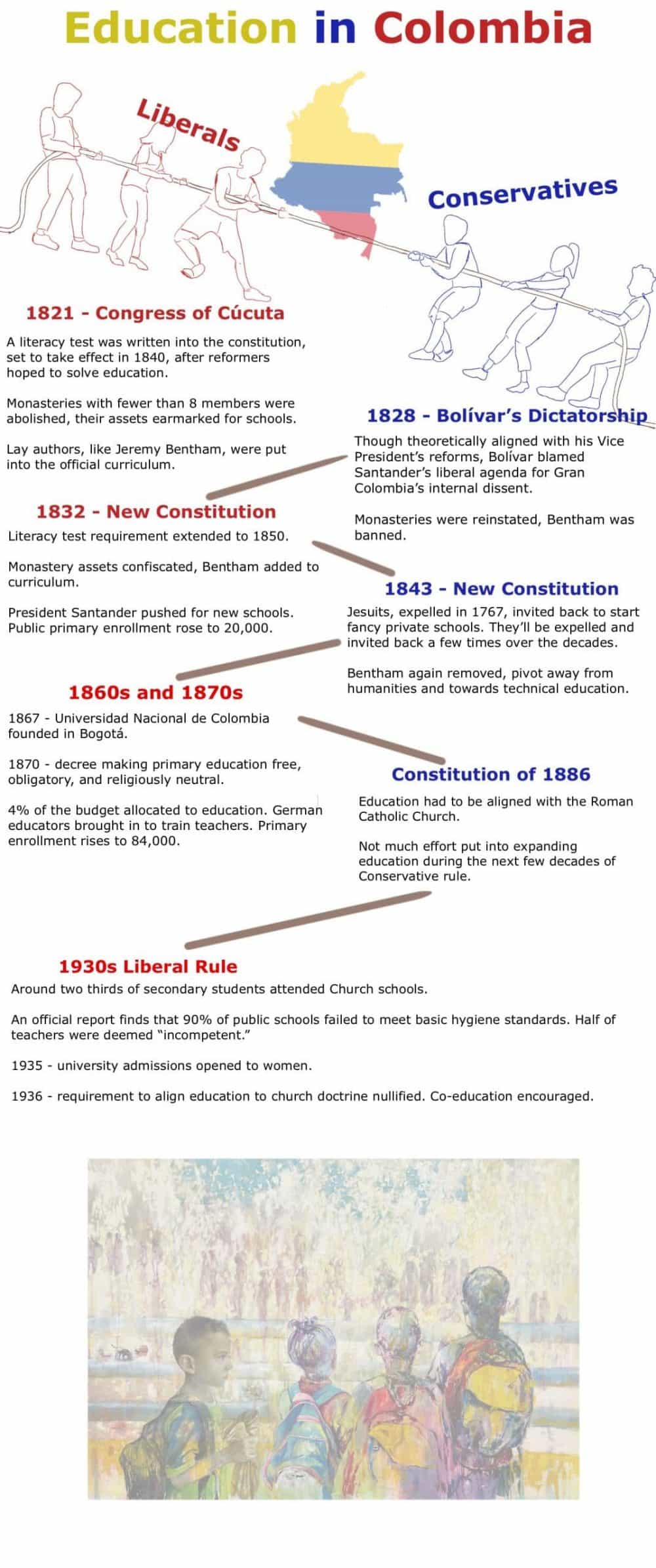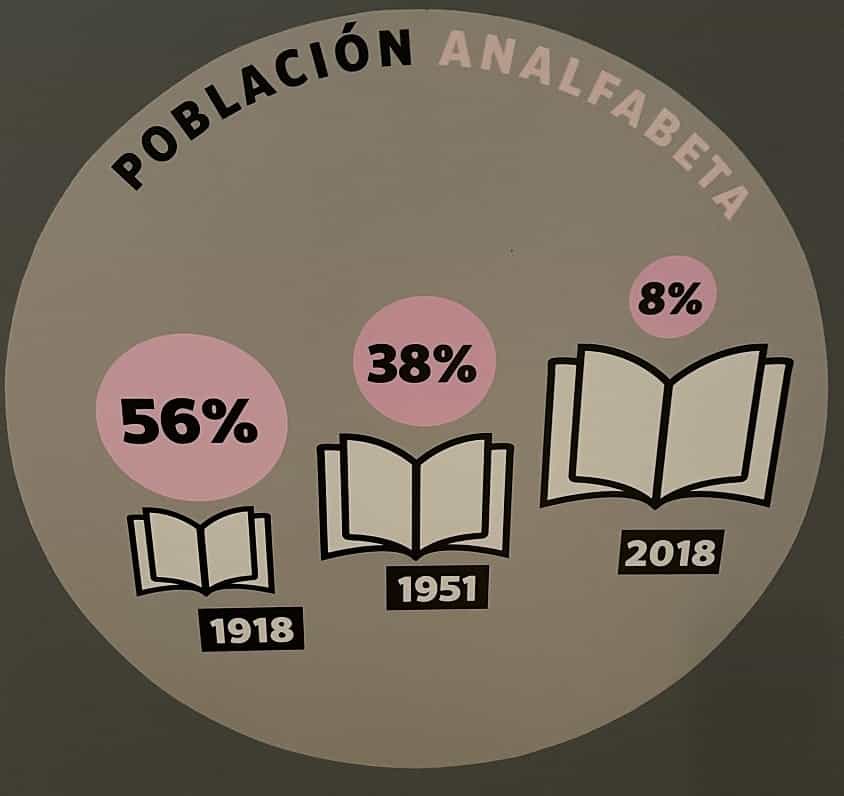A Brief History of Education in Colombia

Justin Hauver
This is the seventh part of a series on Colombian history written to help me make sense of the country’s past. Education research (all research?) depends on an awareness of context, including historical context. Besides, I was curious and I like reading about history.
At the time of the revolution, 2 or 3 percent of the population could read. In a changing world that stat was not acceptable. Education was increasingly seen as a fundamental human right and, perhaps more importantly, it was more and more clear that thriving economies needed more educated workers, engineers, doctors, scientists, bureaucrats, and even generals.
So forward thinkers set ambitious goals and attempted reforms that would move the country’s education system forward. And for around 100 years, conservative reactionaries stalled or blocked progress. A tug of war between Colombia’s parties ensued.

The National Front
By 1950, only 30% of kids in Colombia made it to third grade. Only 10% made it beyond fifth grade. And only 1% made it to university. Basic literacy barely surpassed 60%. More than a century since independence, the country still fell short of the goals that Santander and other reformers had hoped to meet in a couple of decades.
The National Front, which began in 1958, brought stability to the government and renewed investments in education. It was written into the deal that at least 10% of the budget would go to education, a minimum that was consistently surpassed. In 1964, 14% of the budget went to education and in 1978 that number reached 20%.
With such investments in public education, and without the bickering over whether or not to include Bentham, the results were overwhelmingly positive. The number of secondary students enrolled doubled in the 60s while the proportion of primary aged children enrolled in school rose to 77% in 1975. University enrollments in 1985 were ten times higher than in 1950.
Of course, not all went smoothly. In the 60s, for example, teachers from the various departments marched to Bogotá to demand cash payments. Departmental governments, strapped for money, sometimes tried to pay teachers in crates of liquor from their public monopolies (Palacios, 178). Moreover, even in the late 80s, around 14% of students did not receive an education, most of them in rural areas.
The Constitution of 1991
The new constitution consolidated, expanded, and complicated the educational gains from the preceding decades. For the first time, Article 67 made both primary and secondary education a nationally protected right. Kindergarten through 9th grade thereby became obligatory and free for those aged 5 to 15. In addition, Article 68 affirmed the right of students receive a secular education.
At the same time, the federalist constitution decentralized the system of education, giving the bulk of the responsibility and authority to the departments. The current Colombian educational system is structured similar to the one in the US. And as in the US, this adds additional layers of difficulty for anyone interested in concerted efforts to improve education.
Escuela Nueva, for example, had once been a nationally endorsed educational model that had spread to more than 20,000 schools throughout Colombia. But decentralization fractured support networks and, in some cases, undid the work of Escuela Nueva proponents.
Education Today
Overall, Colombia has continued to make progress in education, despite of a number of challenges. Ley 1732 from 2014, from example, requires the establishment of a “Chair of Peace” in every educational institution, a person responsible for cultivating the social emotional skills needed for a peaceful democracy. Given Colombia’s history of violence, such a mandate embodies a clear response to present challenges and hope for the future. Moreover, today the literacy rate is above 90%, primary schools enroll more than nine in ten of eligible students, and secondary schools enroll around eight in ten.
Those numbers, however, have quite a bit of room for growth and hide the uneven progress that has been made in different parts of the country. In rural areas, for example, fewer than 80% of primary aged students enroll in school. Additionally, over a third of the students in the poorest schools are over age – a result of entering school late and frequent retention. Many students also drop out before finishing primary school.

Beyond attendance, international assessments show that those who go to school do not necessarily learn basic literacy and numeracy. According to 2018 PISA results, half of 15 year old students have basic reading skills while 35% have basic math skills (compared to 81% and 73% in the US). Assessments also reveal gaps between genders, between urban and rural students, and between income levels.
Another interesting wrinkle in the educational landscape is the high proportion of private schools. Around 20% of primary and secondary schools are private institutions. A lot of these schools serve middle class and even lower middle class, families. The school I have been observing in Tunja, for example, charges around $50 a month per student and serves a working to middle class population. Taking into account different costs of living, that number would be equal to something like $200-500 in the US. Not nearly enough to pay teachers well, buy fancy equipment, or finance many field trips. Nevertheless, every Colombian I have asked has said that private schools provide a better education. There are clearly some access and equity issues at play here.
So it’s a mixed bag. A lot progress has been made, but a lot of room for growth remains. The good news is that many educators and students are ready and eager to build on past achievements. Though there are many challenges, there is also much hope.
Sources
Magdalena: River of Dreams by Wade Davis
Between Legitimacy and Violence by Marco Palacios
There Are No Dead Here: A Story of Murder and Denial in Colombia by Maria McFarland Sánchez-Moreno
Various articles.
Note: All views expressed are my own, they do not represent the Fulbright or any other organization.
2 Responses
This is probably outside the scope of this, but I’m curious how the country’s history (in particular of the violent aspects) is taught in grade school in Colombia, i.e. if it’s mostly glossed over, or if the origins of the conflicts are covered in detail, reasons why there were varying attitudes towards different players in the conflict, etc.
Great question and something that I’ve been trying to figure out. I came to Colombia in part because it shares a lot of similarities with the US but it’s history often has greater extremes. I’m interested in how a country’s schools can grapple with things like violence, racism, etc. Given the ongoing conflict, I don’t think it’s something that can be glossed over in the same way that parts of the US try to gloss over, say, structural racism. But I also haven’t seen it faced head on.
The favored approach seems to be some “apolitical” strategies aimed at healing from the violence. For that reason, every school has a “Chair of Peace” that is basically in charge of trying to cultivate social emotional skills and a civic mindset. How that looks on the ground is, I think, pretty messy and likely doesn’t amount to much in many cases. But it’s a national structure that is there, which is more than we can say for the US.
Similar to the US, it’s also easier to teach the origins, which are decades removed, than it is to discuss how those things are currently playing out, influencing politics, etc. But I don’t think it’s much of a focus. And some schools are basically not allowed to talk about current politics in the same way that some schools in the US are not allowed to talk about critical race theory. Still, every single student points to narco-trafficking, and the government’s complicity in it and in paramilitary violence, as huge issues. So the information must be filtering down to them in some way.
Anyways, that’s my long winded way of saying. It’s sort of glossed over, but it’s also (superficially) acknowledged and there are tons of initiatives in schools and society to surface “the truth” and cultivate a peaceful, democratic citizenry.